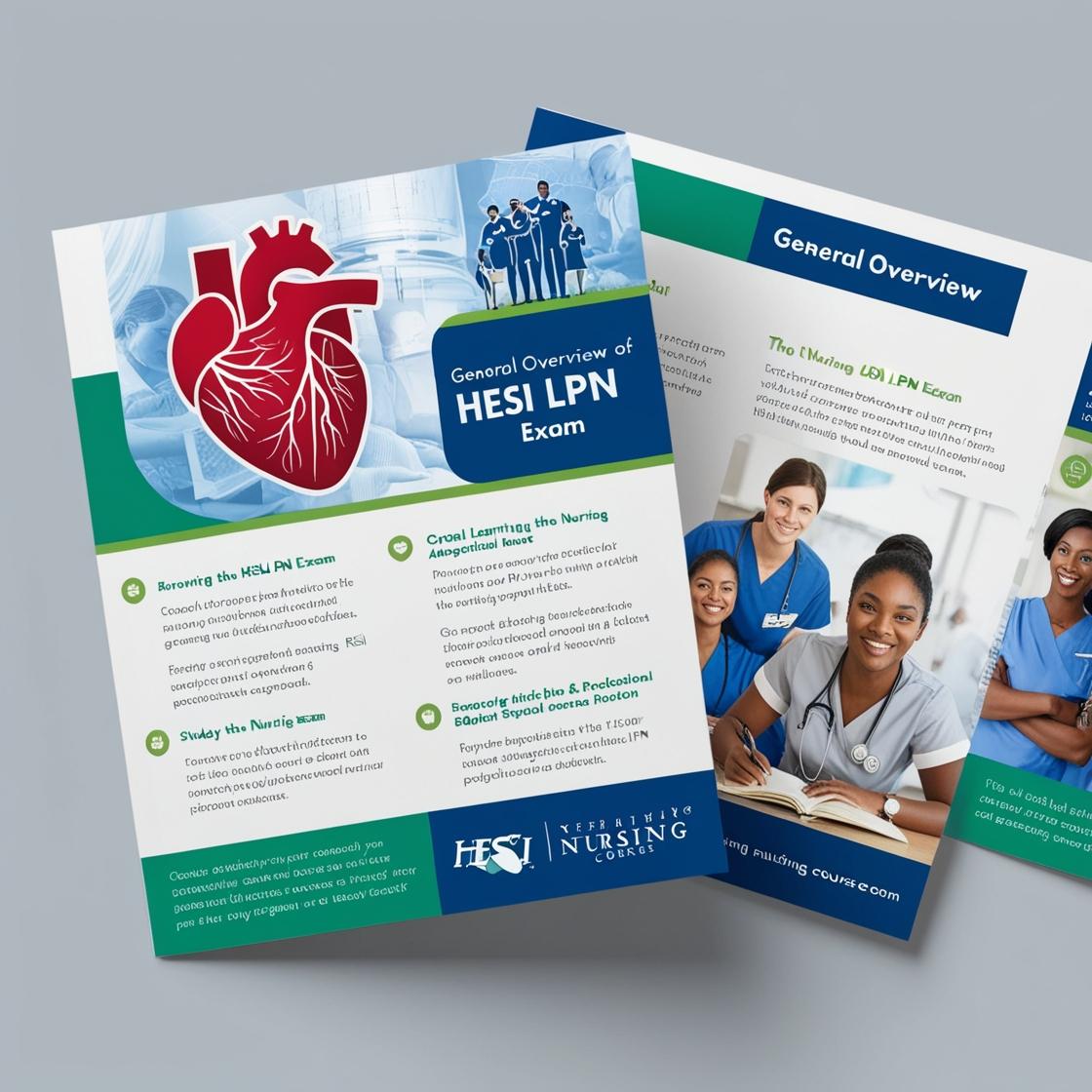HESI LPN
Adult Health 2 Final Exam
1. The nurse is assessing a client with a suspected diagnosis of deep vein thrombosis (DVT). Which clinical sign is most indicative of DVT?
- A. Redness and warmth over the affected area
- B. Decreased peripheral pulses
- C. Cyanosis of the toes
- D. Muscle cramps in the calf
Correct answer: A
Rationale: Corrected Rationale: Redness and warmth over the affected area are classic signs of inflammation, which commonly occur in deep vein thrombosis (DVT) due to the obstruction of blood flow. These symptoms result from the body's inflammatory response to the blood clot. Choices B, C, and D are less indicative of DVT. Decreased peripheral pulses may occur in arterial insufficiency rather than DVT. Cyanosis of the toes indicates decreased oxygenation and is more characteristic of arterial issues. Muscle cramps in the calf are nonspecific and can be caused by various conditions, not solely DVT.
2. A client admitted to the hospital with advanced liver failure related to chronic alcoholism is exhibiting ascites and edema. Which pathophysiological mechanisms should the nurse identify as responsible for the third spacing symptoms? (Select all that apply.)
- A. Portal hypertension.
- B. Sodium and water retention.
- C. Decreased serum albumin.
- D. All of the above
Correct answer: D
Rationale: In advanced liver failure related to chronic alcoholism, ascites and edema occur due to multiple pathophysiological mechanisms. Portal hypertension contributes to the development of ascites by increasing pressure in the portal venous system. Sodium and water retention exacerbate fluid accumulation in the third space. Decreased serum albumin levels lead to reduced oncotic pressure, contributing to the movement of fluid into the interstitial spaces. Abnormal protein metabolism further disrupts fluid balance. Therefore, all of the options (A, B, and C) are correct in this scenario, making choice D the correct answer. Choices A, B, and C alone do not fully explain the comprehensive pathophysiological mechanisms involved in the development of ascites and edema in this clinical context.
3. A client is admitted with a diagnosis of diabetic ketoacidosis (DKA). Which laboratory finding is most indicative of this condition?
- A. Serum glucose of 180 mg/dL
- B. Blood pH of 7.30
- C. Positive urine ketones
- D. Serum bicarbonate of 25 mEq/L
Correct answer: C
Rationale: The correct answer is C: Positive urine ketones. In diabetic ketoacidosis (DKA), the body breaks down fat for energy due to a lack of insulin, leading to ketone production. Positive urine ketones are a hallmark laboratory finding in DKA as they directly reflect the presence of ketosis. Choice A, serum glucose of 180 mg/dL, may be elevated in DKA, but it is not specific to this condition. Choice B, blood pH of 7.30, often shows acidosis in DKA, but urine ketones are more specific to the presence of ketosis. Choice D, serum bicarbonate of 25 mEq/L, would typically be low in DKA due to acidosis rather than elevated.
4. In a community health setting, which individual is at highest risk for contracting an HIV infection?
- A. 17-year-old who is sexually active with numerous partners
- B. 34-year-old homosexual in a monogamous relationship
- C. 30-year-old cocaine user who inhales and smokes drugs
- D. 45-year-old who has received two blood transfusions in the past 6 months
Correct answer: C
Rationale: The correct answer is C. Substance abuse, particularly using shared inhalation equipment like needles and pipes for drug inhalation, significantly increases the risk of contracting HIV. Choice A, the 17-year-old with multiple sexual partners, poses a risk of HIV transmission through sexual contact, but it is lower compared to the direct risk associated with sharing drug paraphernalia. Choice B, the 34-year-old homosexual in a monogamous relationship, is at lower risk since being in a monogamous relationship reduces exposure to HIV. Choice D, the 45-year-old who received blood transfusions, is also at lower risk as blood transfusions are now screened for HIV, decreasing the likelihood of transmission through this route.
5. What is the primary purpose of a chest tube in a client's care?
- A. To drain air and fluid from the pleural space
- B. To prevent infection in the thoracic cavity
- C. To assist with lung expansion
- D. To monitor intrathoracic pressure
Correct answer: A
Rationale: The correct answer is A: To drain air and fluid from the pleural space. A chest tube is primarily used to remove accumulated air or fluid in the pleural space, preventing lung collapse or compromise of lung function. This intervention aims to re-expand the lung and enhance respiratory function. Choice B is incorrect because preventing infection is not the primary purpose of a chest tube. Choice C is incorrect as lung expansion is a result of draining the pleural space, not the primary goal. Choice D is incorrect as monitoring intrathoracic pressure is not the main objective of a chest tube insertion.
Similar Questions

Access More Features
HESI LPN Basic
$69.99/ 30 days
- 50,000 Questions with answers
- All HESI courses Coverage
- 30 days access @ $69.99
HESI LPN Premium
$149.99/ 90 days
- 50,000 Questions with answers
- All HESI courses Coverage
- 30 days access @ $149.99
